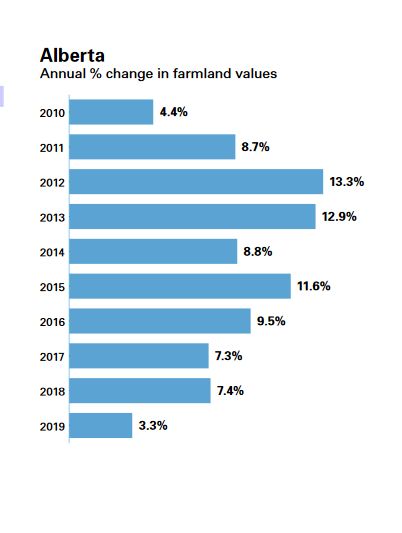Average farmland values in Alberta increased at a much slower pace in 2019 at 3.3%, compared to an increase of 7.4% in 2018. The larger increases were in the south and central regions, while values showed incrementally smaller increases moving northward. Alberta agriculture faced several challenges in 2019 with weaker economic conditions, volatile commodity prices and adverse weather contributing to a smaller average increase in farmland values. Many areas of the province were impacted by a September snowfall, so harvest was delayed or never completed in some areas and the overall quality was down. Potatoes in the southern region were the bright light in 2019 with an increased demand from the processing sector, which contributed to a 3.9% increase in the average farmland value for the region. With an additional potato processing company in the Lethbridge area, producers were given an incentive to increase their irrigated potato production. Dry conditions, however, negatively impacted values for unirrigated land. Northern and Central regions of the province reported stable to moderate increases in farmland values, 1.5% to 5.3%, respectively. Moisture conditions in the western part of the northern region were above average, reducing yield and quality. Many areas of the Peace region experienced periods of forest fires and related smoke. Frost and dry conditions were followed by an early snowfall, which made for a challenging season that resulted in a modest 1.1% increase in average farmland values. Despite this, there were a few pockets in the Peace region that experienced a successful season and land sales continued to be strong, but the increases are still lower than the previous year.

